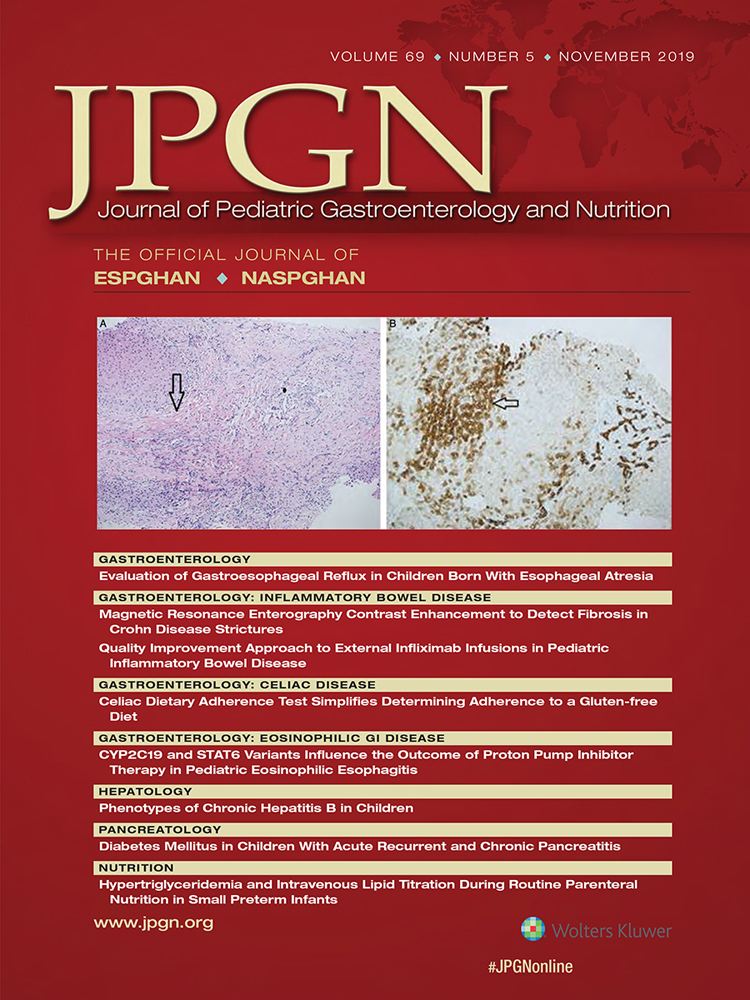Using a Steroid-sparing Tool in Paediatric Inflammatory Bowel Disease to Evaluate Steroid Use and Dependency
The IBD team at the Royal Hospital for Children, Glasgow are supported by the Catherine McEwan Foundation.
R.E.H.'s clinical research fellow post is supported by the Catherine McEwan Foundation. V.G. has received speaker's fees from Ferring and conference fees from Abbvie. L.C. has received conference, accommodation, and travel fees from Ferring and conference fees from Tillots. L.G. has participated in a research consultancy session with Lilly. A.B. has received travel grants from Shire. D.F. has received speaker's fees, travel support, and/or participated in medical board meetings with Nestle, Nutricia, Mead Johnson, and Danone & Shire. R.H. is supported by an NHS Research Scotland Senior Research Fellowship, and has received speaker's fees, travel support, and/or participated in medical board meetings with MSD Immunology, Dr Falk, Nutricia, and 4D Pharma. R.K.R. is supported by an NHS Research Scotland Senior Research Fellowship, and has received speaker's fees, travel support, and/or participated in medical board meetings with Nestle, MSD Immunology, AbbVie, Dr Falk, Takeda, Napp, Mead Johnson, Nutricia, and 4D Pharma. Remaining authors report no conflicts of interest.
ABSTRACT
Objectives:
The aim of the study was to evaluate the use of steroids within the paediatric inflammatory bowel disease (PIBD) population at a tertiary paediatric centre over a year; to identify cases of steroid dependency; and assess factors associated with steroid excess.
Methods:
The prevalent PIBD population (May 1, 2017–April 30, 2018) were reviewed. Data were collected retrospectively from patient records and entered into an online steroid assessment tool (modified for paediatrics).
Results:
A total of 229 patients (181 Crohn disease, 31 ulcerative colitis [UC], and 17 inflammatory bowel disease–unclassified) were included. Of the 229 patients 38 (16.6%) received oral steroids; 12 of 38 (31.6%) receiving >3-month course. Eleven of 38 (28.9%) received >1 steroid course (maximum 2). Of the 229 patients 37 (16.2%) had exclusive enteral nutrition, with 26 of 37 (11.4% total cohort) avoiding steroid use during the study period.
Quiescent disease activity had a negative correlation with steroid use (11/127 [8.7%] vs 27/102 [26.5%] P < 0.01), and steroid dependency (3/127 [2.4%] vs 12/102 [11.8%] P < 0.01). Patients with UC were more likely to be steroid dependent (5/31 [16.1%] UC vs 10/198 [5.1%]; P = 0.02); as were network-managed patients (8/11 [72.7%] vs 7/27 [25.9%]; P = 0.01). Fourteen of 15 (93.3%) of steroid-dependent patients had active steroid sparing strategies in place (eg, commencement, switching, or optimization of therapies).
Conclusions:
We have described rates of steroid use and dependency within our PIBD population. Exclusive enteral nutrition served as a steroid sparing tool in 11.4% of the total cohort. Replication of this study in other paediatric centres would allow comparative analysis.




